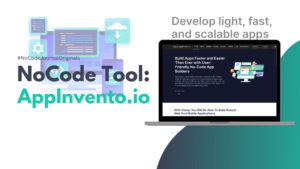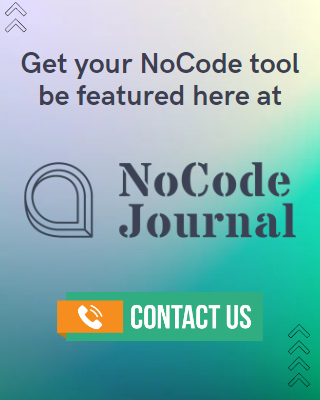Exploring The Top 10 Low-Code And No-Code AI Platforms
- Manish Balakrishnan
In today’s fast-paced world, businesses and individuals a like are eager to harness the power of artificial intelligence (AI) to gain a competitive edge, automate tasks, and make data-driven decisions. However, not everyone has the expertise to dive deep into complex AI development. This is where low-code and no-code AI platforms come to the rescue. These tools democratize AI by making it accessible to non-experts, enabling them to create machine learning models without extensive coding. In this article, we’ll explore the top 10 low-code and no-code AI platforms revolutionizing our approach to AI development.
Table of Contents
ToggleLow-code and Nocode AI
Low-code and no-code AI refer to technologies and platforms that enable individuals with varying levels of technical expertise to develop and deploy artificial intelligence (AI) applications and solutions with minimal or no programming or coding skills required.
No-Code AI: No-code AI platforms are designed for individuals who have little to no programming experience. They typically provide a visual, drag-and-drop interface where users can create AI models and applications by assembling pre-built components and defining logic through graphical interfaces. These platforms abstract much of the underlying complexity of AI development, allowing users to focus on solving business problems rather than writing code. Examples include tools like Google Teachable Machine, Bubble, and Adalo.
Low-Code AI: Low-code AI platforms offer a middle ground between complete coding and no coding at all. They provide a simplified development environment where users with some technical knowledge can build AI solutions more quickly than traditional coding methods. Low-code platforms often include visual development interfaces, pre-built components, and some level of customization through code when needed. Examples include Microsoft Power Apps, OutSystems, and Mendix.
The benefits of low-code and no-code AI include:
Accessibility: They make AI accessible to a broader audience, including business analysts, subject matter experts, and non-developers, enabling them to participate in AI projects.
Speed: They accelerate the development and deployment of AI applications by simplifying the development process.
Cost-Effective: They can reduce development costs by requiring fewer specialized AI developers.
Flexibility: They allow for rapid prototyping and experimentation, enabling quicker iterations and improvements.
Top 10 low-code and no-code AI platforms
1. Akiko
Akkio is a platform that offers the opportunity to kickstart AI deployment within just 10 minutes, making it accessible to individuals without prior coding or data science expertise. It facilitates the development of AI-driven workflows, prioritizing rapid deployment and evaluation. Moreover, Akkio provides an extensive range of integrations, including widely-used data platforms such as Snowflake, as well as popular marketing tools like Hubspot and Salesforce.
2.DataRobot
DataRobot is a cloud-based platform that provides a comprehensive set of tools for automating data preparation, algorithm development, and deployment. It offers specialized models tailored for various industrial applications, spanning sectors like banking, retail, healthcare, manufacturing, and public sector organizations. Notably, DataRobot places a strong emphasis on explainable AI, striving to instill confidence in the insights and decisions it generates by ensuring that its methods are transparent and comprehensible to humans.
3. Amazon SageMaker
AmazonSageMaker leverages Amazon’s extensive expertise in developing and deploying machine learning models for consumer-facing applications. SageMakeris designed to make this expertise accessible to everyone. With SageMaker Jumpstart, users can effortlessly dive into the world of machine learning by choosing from various templates tailored for the most commonly needed types of machine learning applications that businesses can harness for their advantage.
4.Apple’s Create ML
Apple’s Create ML provides an intuitive drag-and-drop interface, simplifying the creation of iOS applications focused on recommendation, classification, image recognition, and text processing. You can easily gather data using your iPhone’s camera and microphone. If you have a Mac computer equipped with a GPU, you can harness its capabilities to accelerate and improve the training process.
5. GoogleTeachable Machine
Google Teachable Machine is exceptionally user-friendly, particularly suited for beginners. It offers straightforward tutorials that walk you through the process of training algorithms to classify and categorize data, which is one of the fundamental use cases for machine learning and artificial intelligence. It serves as an excellent educational tool for building a foundational understanding of ML before delving into more advanced platforms geared towards developing operational applications.
6. Google AutoML
Google AutoML is designed with users who possess some familiarity with machine learning in mind, making it accessible to those with a foundational understanding of ML concepts. Its user-friendly graphical interface allows individuals to quickly dive into exploring its capabilities in computer vision and natural language processing. Since it operates within the Google Cloud ecosystem, users familiar with other Google productivity tools will find a familiar environment to work within.
7.Microsoft Lobe
Microsoft Lobe is a user-friendly tool designed for training image recognition algorithms. Microsoft created Lobe to help users establish a solid understanding of the basics. The platform automatically selects models most likely to succeed based on the user’s specific workload, eliminating the need for coding expertise. If users eventually require more advanced capabilities, they can seamlessly transition to Azure AI, Microsoft’s more sophisticated machine learning framework.
8.ObviouslyAI
ObviouslyAI is a platform designed to make AI-powered analytics accessible to anyone. It allows users to easily input their data, regardless of its format, and quickly harness the advantages of AI-driven insights. The platform provides templates for a variety of tasks, including time series analysis (predicting future values based on historical data), forecasting churn, risk assessment, fraud detection, and recognizing cross-selling opportunities. This versatility empowers users to address a wide range of analytical challenges with AI-driven solutions.
9.PyCaret
PyCaret is a Python library, and as such, it does require a bit more technical proficiency compared to some of the other tools mentioned earlier. However, it positions itself as a low-code solution by offering a range of pre-configured functions and wrappers that significantly simplify the processes of data preparation, analytics, and model training. This makes it a valuable resource for individuals with Python programming skills looking to streamline and accelerate their machine learning workflows.
10.Nanonets
Nanonets is a specialized AI platform created to streamline and expedite the extraction of structured or semi-structured data from various types of documents. If your business deals with the labor-intensive and expensive task of importing data from forms, text documents, and similar sources, Nanonets might be the solution you’ve been seeking. Leveraging machine learning, it continually improves its accuracy by learning from errors, making it increasingly proficient at locating the specific information you require.
Conclusion
Low-code and no-code AI platforms democratize artificial intelligence, making it accessible to a broader audience. Whether you’re an Apple developer, a marketer, or a data scientist, there’s a tool on this list that can help you harness the power of AI without the need for extensive coding. As the AI landscape continues to evolve, these platforms will play a pivotal role in driving innovation and efficiency across various industries. Whether you’re looking to streamline your business processes, enhance your mobile app with AI features, or simply explore the possibilities of machine learning, these platforms offer a user-friendly gateway into the world of artificial intelligence. Embrace the future of AI development with these top 10low-code and no-code AI platforms.
Share
follow us
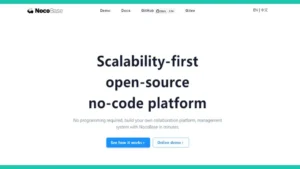
NoCode Tool: NocoBase

Women In The NoCode Space – Part 2

NoCode Tool: Sofy
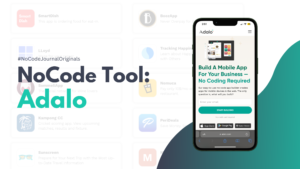
NoCode Tool: Adalo
Explore related posts

Design Thinking and NoCode
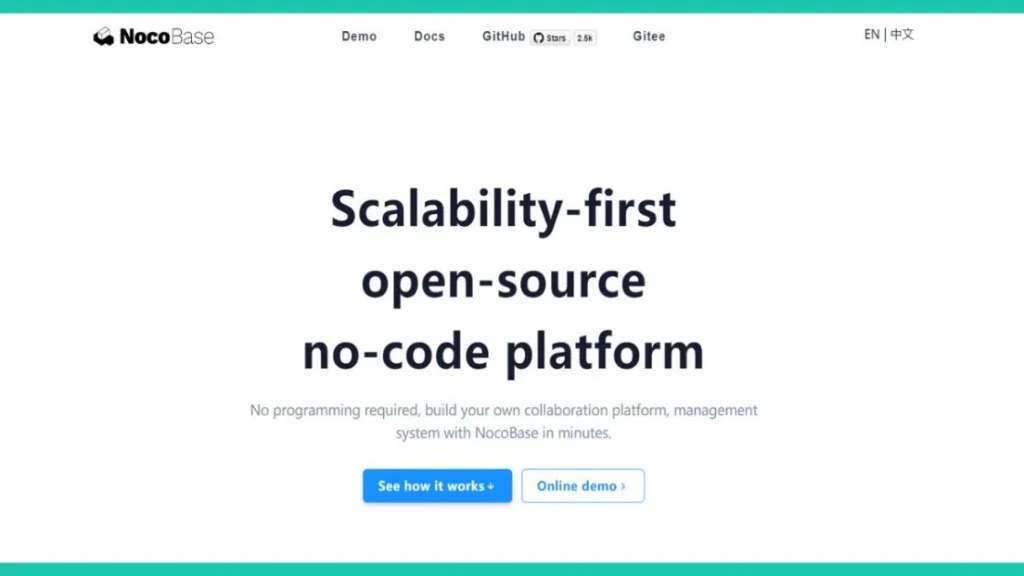
NoCode Tool: NocoBase







